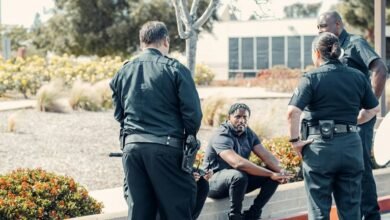Caller Verification Global Alerting Operations Division 3515520018 3791797580 3533362851 3343047148 3273077890 3273362196

The Caller Verification Global Alerting Operations Division plays a crucial role in strengthening security within telecommunications. Employing sophisticated biometric authentication and machine learning, it effectively mitigates fraudulent activities linked to phone communications. The identifiers 3515520018, 3791797580, 3533362851, 3343047148, 3273077890, and 3273362196 signify essential components of this initiative. Understanding the mechanisms and implications behind these advancements raises questions about the future of secure communication and the evolving landscape of fraud prevention.
The Importance of Caller Verification in Modern Communication
As communication technologies evolve, the significance of caller verification becomes increasingly paramount.
Caller authentication is essential for maintaining identity assurance, safeguarding personal information, and preventing fraud. In a world where privacy and security are often compromised, effective verification methods empower individuals to retain control over their communications.
Thus, the integration of robust caller verification practices is critical to fostering trust in modern communication systems.
Technologies and Protocols Used in Caller Verification
The landscape of caller verification is shaped significantly by various technologies and protocols designed to enhance security and trust.
Biometric authentication, particularly through voice recognition, plays a crucial role in this domain. By analyzing unique vocal characteristics, systems can authenticate callers with increased accuracy.
This integration not only fortifies security measures but also fosters user confidence, allowing for more secure communication channels.
Case Studies: Success Stories of Caller Verification
While numerous organizations have embraced caller verification technologies, several notable case studies exemplify the effectiveness and benefits of these systems.
Real world applications reveal enhanced security measures, reducing fraud incidents significantly.
User experiences indicate increased confidence in telecommunications, fostering trust among clients.
These success stories highlight the transformative impact of caller verification, showcasing its potential to streamline operations and enhance overall service quality.
Future Trends in Caller Verification and Security Measures
Although advancements in technology continue to shape the landscape of telecommunications, the future of caller verification is poised to incorporate even more sophisticated security measures.
Biometric authentication, leveraging unique physical traits, will enhance identity verification processes. Additionally, machine learning algorithms will analyze patterns and anomalies, improving accuracy and responsiveness against fraudulent activities.
These innovations promise to create a more secure communication environment, fostering user confidence.
Conclusion
In an age where trust is as rare as gold, the Caller Verification Global Alerting Operations Division stands as a vigilant guardian of telecommunications integrity. By leveraging cutting-edge biometric technologies and machine learning algorithms, they not only thwart fraudulent activities but also restore user confidence in communication systems. As the landscape of digital interactions continues to evolve, the commitment to secure caller verification will remain paramount, ensuring that authenticity prevails in a world fraught with deception.





